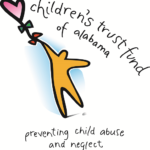
In recent years, there has been great progress in reducing cigarette use among teenagers in the United States. According to the CDC, from 2011 to 2018, current (past 30-day) cigarette smoking was nearly halved among middle school (1.8%) and high school students (8.1%).1 With these significant strides, parents may begin to question why organizations like APC continue to harp about preventing tobacco exposure.
Thankfully, the answer is simple: the risks far outweigh the progress.
Related Risks
To better understand how the pitfalls trump the gains, it helps to review what the risks of smoking are. To put it plainly, cigarette smoking causes almost half a million deaths per year in the United States alone.2 Smoking is connected to several of the leading causes of death. Smokers have an increased risk of:

- A variety of cancers including (but not limited to) areas like lung and mouth,
- Chronic Obstructive Pulmonary Disease (COPD, a form of lung disease),
- Cardiovascular disease,
- Stroke (blood clots and burst blood vessels), and
- Gum disease.3
This list is a fraction of the many ways that smoking can negatively affect those regularly exposed to cigarette smoke. An important note: even second-hand smokers (those who do not use cigarettes but are regularly surrounded by those who do) have an increased risk of these same negative health effects.
Bad Behaviors
Beyond what cigarettes do to the body, they affect behavior as well. Cigarettes contain nicotine, a highly addictive chemical that releases dopamine into the brain. Dopamine is the chemical that makes us feel good for repeating certain behaviors like eating, exercising, or sleeping. So when a person smokes a cigarette, nicotine tricks the brain into rewarding that behavior, a process known as reinforcement.4 This habit grows worse as cigarette use continues.
Cigarettes change the behavior of those that use them and reward seeking stimulation from substances. The result of reinforcement is that cigarettes are a gateway drug; they sometimes lead users to try other substances. According to the Department of Health and Human Services, over 90% of adult cocaine users between the ages of 18 and 34 had smoked cigarettes before they began using cocaine.5
So, not only does smoking cigarettes increase the risk of disease, it increases the likelihood that users will try more dangerous substances, further increasing the risk of premature death. Fortunately for parents and teens alike, there is one method that can bypass the smoking-related diseases, reinforced bad behaviors, and negative health effects that smoking causes: Prevention.
Prevention Panacea
Prevention is so strongly emphasized because, when implemented correctly, teens do not have to learn to kick a smoking habit. They do not have to spend over $10,000 every year on a substance that is killing them.6 They do not have to worry about how an addiction may manifest in new substances. They do not have to consider rehab options.

Further, prevention can come in the form of several actions. As the CDC suggests, communities and governments can implement smoke-free laws, run mass media campaigns, raise tobacco prices, and make support services easy to access.7 Parents, too, have options like working with schools, talking to their teenagers, setting up plans to exit pressured situations, and practicing saying no.
By being informed, working within our communities, remaining vigilant in schools and at home, and talking to our teenagers, we can provide the tools for success. We can secure their sobriety. We can protect our posterity. In this way, prevention is not ignoring progress; prevention is pursuing more.
- https://www.cdc.gov/tobacco/data_statistics/fact_sheets/youth_data/tobacco_use/index.htm
- https://www.cdc.gov/tobacco/data_statistics/fact_sheets/health_effects/effects_cig_smoking/index.htm
- https://www.cancer.org/cancer/cancer-causes/tobacco-and-cancer/health-risks-of-smoking-tobacco.html
- https://teens.drugabuse.gov/blog/post/why-nicotine-so-addictive?utm_source=teenRSS&utm_medium=email&utm_campaign=teen-Blog
- https://www.cdc.gov/tobacco/data_statistics/fact_sheets/youth_data/tobacco_use/index.htm
- https://www.smokefree.org.nz/smoking-its-effects/cost-of-smoking
- https://www.cdc.gov/tobacco/data_statistics/fact_sheets/adult_data/cig_smoking/index.htm








